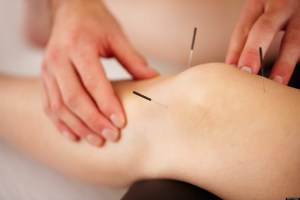A US researcher has pinpointed a molecule that may control how acupuncture relieves pain.
Experiments with mice have shown that levels of Adenosine (a natural painkiller we have in our bodies) increased at the acupuncture sites. Adenosine is known to play many roles within the body including regulating sleep and reducing inflammation in damaged areas. Other research has shown that it becomes active in the skin after an injury, like a natural pain killer.
In the latest research, a team performed a thirty-minute acupuncture session at a pressure point in the knee of mice that had discomfort in one paw. The results showed that the levels of Adenosine in the tissue near the needlepoint were twenty-four times greater than before. Then using a drug that extends the effects of Adenosine, it was discovered that the benefits of the acupuncture session lasted three times longer.
Dr Maiken Nedergarad, a neurologist at the University of Rochester Medical Centre commented: Acupuncture has been a minister of medical treatment in certain parts of the world for 4,00 years, but because it has not been understood completely, many people have remained sceptical”.

Acupuncture is used for a wide array of treatments though the NHS limits its use to lower back pain only. Experts agree that acupuncture can mediate its effects in a number of different ways. A spokesperson from The British Pain Society commented; We have known for a long time that acupuncture alters the response to pain by modulation of some of the pain pathways in the spinal cord, and also by the release of endorphins.
He goes on to say that it is interesting that scientists have found an alteration in the tissue levels of Adenosine, which helps to explain some of the modulatory effects of acupuncture on pain perception.
Source: bbcnews
